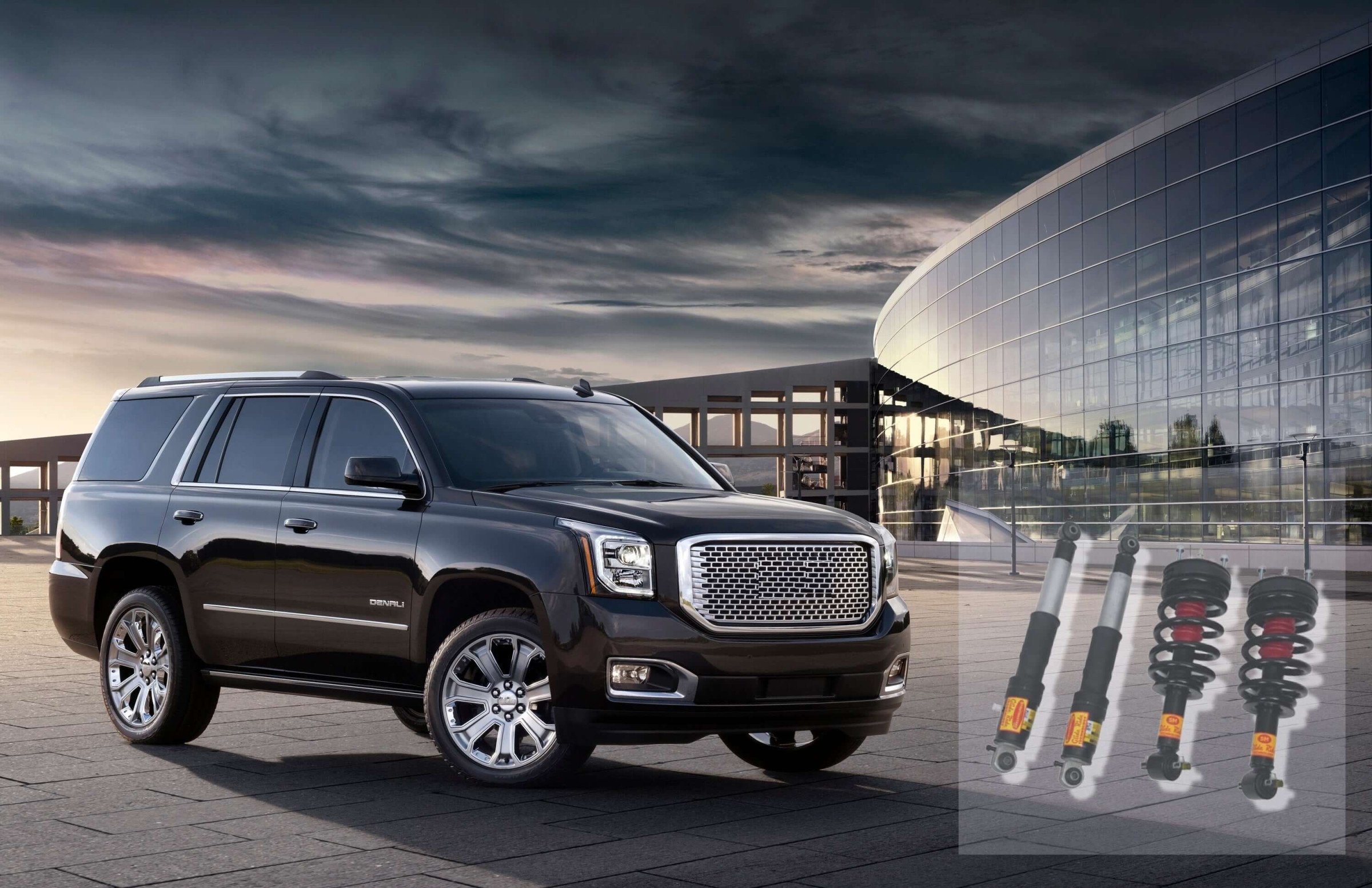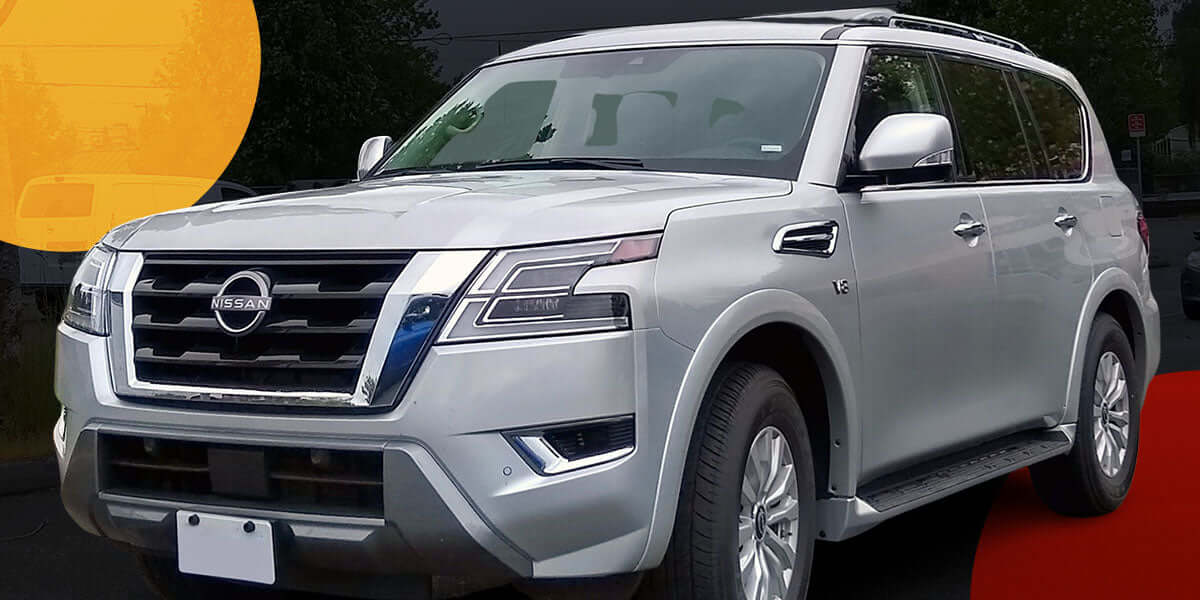Magnetic suspension systems—also known as MagneRide—have only been around for less than 20 years, but they’re becoming increasingly common in high-end vehicles. But as more cars with these systems hit the road, the number of problems people report with them is also on the rise.
Magnetic struts leaking and other issues can make your car uncomfortable and even unsafe to drive. In this article, we’ll go over how to identify issues with a MagneRide suspension and the best way to fix them.
What Is a MagneRide Suspension?
A MagneRide suspension is a kind of active suspension system that uses electronically-controlled magnetic fluid to provide adjustable damping power. These magnetic suspensions first appeared in 2002 on the Cadillac STS and have since grown in popularity.
The system uses monotube shocks filled with a magnetorheological fluid, which is sometimes referred to as magnetic oil. This fluid responds to electronic signals with changes in viscosity—or, the thickness and hardness of the fluid—to provide highly adjustable levels of damping. As a result, the systems can quickly and accurately respond to changes in the road and keep the vehicle at a relatively constant ride height.
How Does MagneRide Work?
MagneRide suspensions work by taking electronic readings of a vehicle’s ride height and using those signals to provide more or less resistance as needed. This is a constant process that works via the following steps:
- Ride height sensors mounted at each wheel take readings of the car’s body in relation to the wheel axle. The sensors send this signal to an electronic control unit (ECU) for processing.
- The ECU—also known as an electronic control module—processes these signals and determines whether more or less resistance is needed at each wheel. It then sends “instructions” to each strut or shock.
- After receiving instructions from the ECU, each shock or strut uses internally-mounted electromagnetic coils to adjust the viscosity of the fluid inside. When one corner of the vehicle needs less resistance, the suspension will reduce the viscosity of the fluid, and vice-versa.
How Long Do MagneRide Shocks Last?
Most MagneRide shocks last between 50,000 and 75,000 miles, while some last well over 100,000 miles. The true answer is, it depends. How long your car’s magnetic suspension will last depends on a few factors:
- Your vehicle: MagneRide suspensions on heavier cars typically have a shorter lifespan than those mounted on smaller, lighter vehicles.
- Your driving habits: How long your magnetic shocks and struts last depends a great deal on how much you ask of them. MagneRide suspensions that are driven hard with lots of hard braking, accelerating, and turning will wear out sooner than those that are driven more gently.
- Your roads: Smooth, well-maintained roads are much easier on your suspension than roads filled with potholes and cracks. As a result, your magnetic shocks and struts will last longer if the roads you drive on most often are in good shape.
- Your luck: MagneRide suspensions and the components around them can always suffer from manufacturing defects, poor installations, or other things out of your control.
Common MagneRide Problems
With advanced, complex systems like MagneRide, there is a practically endless number of things that can go wrong. However, some problems are far more common than others. Some of the most common magnetic suspension problems include:
- Magnetic struts leaking: Worn-out seals or cracks can allow the magnetic fluid inside the shock to leak out. Even a small leak can throw the entire system off, causing more severe problems.
- Electronic failure: A MagneRide system relies heavily on communication between the ride height sensors, ECU, and magnetic shocks and struts. Any electronic faults along the chain, whether due to connection problems or software issues, can cause the system to fail.
- Broken or misaligned seals: MagneRide suspensions are closed systems and require a strong seal to operate efficiently. When the seals around the shocks and struts wear out, crack, or fail to align properly, the system will have a much harder time keeping the vehicle at the proper ride height.
- Sensor failure: The ride height sensors are necessary to provide accurate information to the ECU. If any of these sensors malfunction, the entire MagneRide system could start to fail.
How to Spot Magnetic Suspension Issues
While the actual problems with a MagneRide suspension are best identified by a professional, you can spot the symptoms yourself. Your car’s diagnostic system monitors the suspension and will illuminate a warning light when it notices a problem.
However, this may only happen after the problem has become relatively severe. By spotting problems early and attending to them right away, you can limit the damage that a bad magnetic suspension does to your vehicle.
Here are some of the early warning signs of a failing MagneRide suspension:
- Leaning or sagging: If you notice that your vehicle leans or sags to one corner or side while it’s resting, the suspension is probably to blame. This happens most commonly in the rear end of a car or truck, but it can happen at any wheel.
- Long stopping: Your magnetic suspension absorbs much of the force of stopping your vehicle. If your brakes are in good shape but your car still takes a long time to come to a stop, it could indicate a worn out or broken suspension.
- Bouncy driving: A MagneRide will provide an extremely smooth ride when it’s working as intended. If you notice that your ride is bumpier than normal, the suspension isn’t doing its job properly.
- Nose diving: When a car’s front suspension is worn out, it can dip down in the front and lift up in the rear when coming to a stop. This is known as “nose diving” and is a clear indicator of a bad front suspension.
How to Test a Magnetic Suspension
You can also actively look for issues with your MagneRide suspension using a simple method known as the “bounce test.” To do this, walk to each corner of your vehicle and push down hard. When the suspension is working properly, the corner will spring back into place and settle quickly. If it is slow to rise or bounces up and down before settling, you could have an issue.
How to Fix MagneRide Issues
Unfortunately, fixing a magnetic suspension is much more difficult, complex, and time-consuming than fixing a coilover suspension. However, you shouldn’t ignore MagneRide suspension problems. Driving on a bad suspension can be uncomfortable at best and dangerous at worst. It can also cause further problems with your car.
Fixing MagneRide at the Dealership
If you’ve been searching for ways to fix your MagneRide suspension, you have probably noticed that it can be very expensive. That’s especially true if you go to the dealership for repairs—often a first option for many people.
There are a few reasons why it costs so much.
For one, when you have magnetic suspension problems fixed at the dealership, you’ll have to use original equipment manufacturer (OEM) components. These parts are extremely expensive. Just one OEM magnetic shock and strut assembly can set you back as much as $1,000, depending on your vehicle.
You’ll also have to pay for shop labor. Fixing complex systems and even diagnosing the issues can take a lot of time, which translates to a lot of money on your repair bill.
Replacing Your Magnetic Suspension
Despite what your dealership may tell you, you don’t have to go to them to fix your MagneRide suspension. You also have the option to buy aftermarket magnetic suspension components to replace your worn-out or broken parts.
Aftermarket suspension components are typically far more affordable than OEM parts. When they’re made well by a reputable company, they can meet or even exceed the quality, fit, and function of the original.
For example, this GMC Yukon 1500 front magnetic suspension kit from Strutmasters includes two complete strut assemblies at a cost of just under $700. That means you can replace your entire front MagneRide suspension for significantly less than the cost of just one magnetic shock.
When you go with aftermarket parts, you also get to choose your repair shop. Your neighborhood mechanic is probably cheaper than the dealership and offers a more personal experience.
Why Choose Strutmasters MagneRide Shocks and Struts
Not all aftermarket magnetic suspension components offer the same quality and performance. Some manufacturers use cheap components, shoddy manufacturing, poorly-designed parts, or a combination of the three.
But with more than 20 years in the suspension industry, Strutmasters has a reputation built on quality and service. MagneRide replacement kits and other magnetic shocks and struts from Strutmasters are designed and built to the same high standards as all of the company’s products. That means that you can count on the following when you buy from us:
- Guaranteed fitment: Unlike some companies that reuse or modify parts meant for one car to go on another, the engineers at Strutmasters design each component to be a perfect fit for the car it’s intended for.
- Expert service: Strutmasters offers knowledgeable customer support before, during, and after you purchase your magnetic suspension parts. While you probably won’t need the help, we’re here anyway.
- High-quality materials: We insist on using only the best available alloys and other materials in our kits and components to ensure peak performance and longevity.
- Trusted manufacturing: Our magnetic shocks and struts are produced here in the U.S.A. where the Strutmasters team can keep a close eye on the manufacturing process. This allows us to ensure that our products are made according to our standards.
- Product warranty: A warranty is a sign of confidence from the manufacturer that your product will work well and will last. That’s why we include a one-year guarantee with all of our magnetic suspension components, giving you the same confidence in our products that we have.
Strutmasters has been one of the most trusted names in the suspension industry since 1999. When you need a high-quality, affordable magnetic suspension replacement solution, look no further than the Suspension Experts.
If you’re ready to order, simply search for your car’s make, model, and year on our website. You can also order by calling our office at 866-597-2397 and speaking directly to one of our friendly, knowledgeable team members. If you need support after hours, you can also use our chat feature on the right-hand side of the website.





